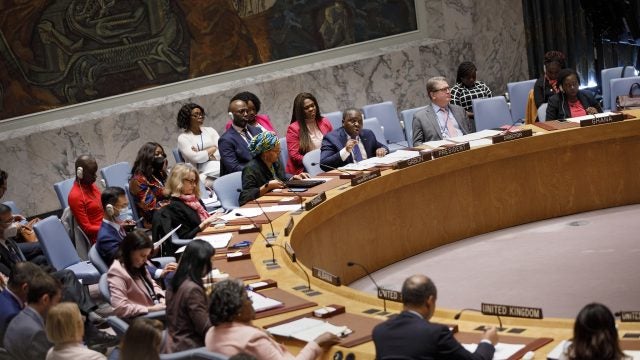
Title: Ranks, Riches, or Ruin: What Leaving the U.S. Military Means for Soldiers and the Future of the Services
Twelve years of ongoing military operations have strained the U.S. military significantly. With forces having left Iraq over a year ago and the gradual security transition in Afghanistan underway, the U.S. military now approaches an uncertain crossroads. Budgetary concerns, a strategic ‘pivot’ to Asia, ambiguity regarding force levels, and a myriad of other issues have embroiled the military in debate and brought defense-related matters to headlines. What is unclear to Pentagon policy-makers is equally as unknown to the service members who constitute the ranks of the U.S. military, who inarguably and profoundly feel the weight of these looming dilemmas. Service members are consequently presented with a difficult predicament: to vote with their feet and voluntarily separate from the force, or to remain in the ranks and face a murky future.
In either decision, a positive outcome is far from guaranteed. Post-9/11 veterans face many obstacles when exiting the service, whether reorientation toward civilian life or finding suitable work. If service members decide to stay in the military, they might soon receive fewer benefits or possibly be forced to involuntarily separate (the latter affecting the Army and Marine Corps). It is crucial that they consider the choices and consequences thoroughly. Conversely, it is also imperative that the U.S. Department of Defense examines these pros and cons, especially when determining the future size and composition of a post-Afghan transition U.S. military.
Remaining in the Ranks
Calls for spending reductions in the Defense Department cast doubt as to whether service members will maintain current benefits or annual pay increases. The inexorably growing cost of Tricare, the military’s health care program, places senior defense planners as well as legislators in a complex situation. The $52 billion defense cuts mandated by the Budget Control Act must fall somewhere, and personnel spending is not exempt from fiscal axing. Under the current Future Years Defense Plan (FYDP), the Defense Department plans for an active duty force of 1.32 million in 2017, proposing 90,000 fewer service members than in 2012. While there is current resistance to the budgetary Sword of Damocles hanging over the Defense Department, such as dispute over a new round of base closures, it is unlikely that defenders of current funding levels will be able to stave off cuts indefinitely.
Despite these concerns, many service members will continue to serve honorably in a fulfilling career through the current FYDP and beyond 2017. The U.S. military has consistently attracted a pool of talented and capable men and women willing to dedicate their lives to national service. Neither fiscal austerity nor a nebulous defense future will change this. Though budgetary cuts will probably affect military benefits to some extent, the military will still extend unique opportunities and benefits to recruits, such as the generous provisions of the Post-9/11 GI Bill. Additionally, military service affords job security in an economy still recovering from recession.
Leaving the Force
Service members who contemplate leaving the military ultimately evaluate chances of finding either ‘riches’ or ‘ruin’ after their transition. Inarguably, veterans face many difficulties when moving from a military to civilian environment that can make transition look especially daunting. Though the rate has improved substantially since the beginning of this year, younger veterans (18-24) faced an alarming unemployment rate of 20.4 percent in 2012. The number of homeless Iraq and Afghanistan veterans is troubling, totaling 13,000 in 2010. However, economic deterrents to leaving the force are overshadowed by the problems raised with post-traumatic stress disorder among combat veterans. Punctuated too frequently by tragic cases of suicide, many post-9/11 veterans see PTSD as something exacerbated by the change from military to civilian life, which many combat veterans elect to avoid.
Nevertheless, veterans have performed exceptionally outside of the military, and many have taken advantage of the enormous opportunities available to them. Approximately 817,000 veterans have enrolled in educational institutions through the Post-9/11 GI Bill. Veterans own 9 percent of businesses nationwide, employing 5.8 million Americans. Of employed female veterans who served after 9/11, an impressive 50 percent are employed in management or professional positions. Though veterans comprise a sizeable portion of public sector employment, 290,000 veterans have been trained and hired into the private sector within the past two years. With new initiatives designed to incorporate veterans into the U.S. workforce, as well as the demonstrated value veteran employees bring to firms and organizations, the prospects for service members transitioning to the civilian world look increasingly brighter.
Conclusion
Budgetary constraints, strategic goals for the future, and international security developments are a few of the innumerable factors that will determine the trajectory of the U.S. military. Both senior defense officials and service members face an uncertain future. What is certain is that decisions made by one will have consequences for the other. Defense planners would be wise, under any fiscal circumstance, to retain the indispensable experience and knowledge of Afghanistan and Iraq veterans who value their long-term prospects with the military, enlisted or officer. The rank-heavy debate ensuing from Lieutenant General Barno’s warning of an ‘exodus’ of skilled officers, as well as Tim Kane’s recent book, Bleeding Talent, highlight the causes and potential effects of these scenarios. Veterans should remain active in political affairs that will invariably affect their future, whether it is in or out of uniform. In any case, legislators, senior defense planners, business owners, and concerned citizens alike should remain keenly aware of the dilemma facing service members, as their decisions to remain in the future military or join the civilian world will deeply impact society and national security.
Image Credit: Sgt. Keonaona Paulo, Public domain, via Wikimedia Commons
This is an archived article. While every effort is made to conserve hyperlinks and information, GJIA’s archived content sources online content between 2011 – 2019 which may no longer be accessible or correct.
More News

This article explores the uncertain future of Arctic governance amid shifting global geopolitics. It argues that whether Washington and Moscow opt for confrontation or cooperation, multilateralism in the Arctic…

Twenty-five years ago, the United Nations Security Council adopted Resolution 1325, establishing a framework that underpins the Women, Peace, and Security (WPS) Agenda. The Resolution recognized both the…

When we analyze conflicts in the Middle East, we are not analyzing conflicts with isolated impacts but risks for global energy security. Recent conflicts in the Middle East have highlighted…